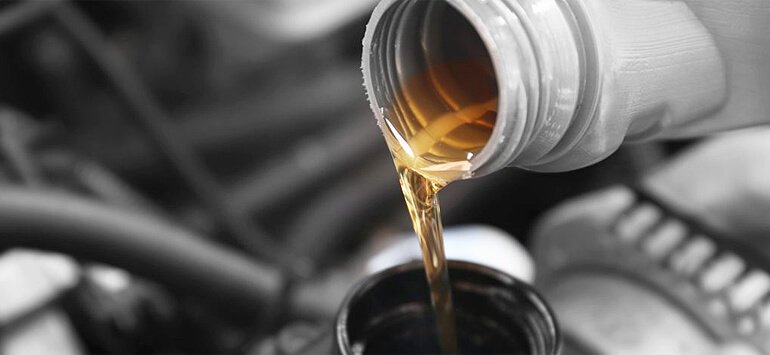Contacts Us
Have a Question?

Transmission Service & Repair
Transmission Preventative Maintenance: Clearing the Myth of “Lifetime” Transmission Fluid
Transmission fluid is often considered the lifeblood of a vehicle’s transmission, playing a pivotal role in lubricating and cooling the system, reducing friction, and ensuring smooth shifting. Despite the significant importance of this fluid, many drivers have been led to believe in the myth of “lifetime” transmission fluid. This misconception suggests that a vehicle’s transmission fluid doesn’t require replacement throughout the lifespan of the car, which is far from the truth. In reality, maintaining your transmission with timely fluid changes is essential for prolonging the life of your transmission and avoiding costly repairs.
The Myth of Lifetime Transmission Fluid
The term “lifetime” transmission fluid is misleading. It originated as a marketing term designed to reduce the maintenance costs associated with vehicle ownership. While some vehicles are equipped with synthetic transmission fluids that can last longer than traditional oils, no transmission fluid is designed to last the lifetime of the vehicle without degradation. Transmission fluid, like all lubricants, deteriorates over time due to heat, pressure, and contaminants, such as metal shavings or dirt.
The idea of lifetime transmission fluid often comes from the fact that some manufacturers specify long intervals between fluid changes, sometimes up to 100,000 miles or more. However, this doesn’t mean that the fluid is good indefinitely. The intervals for changing the transmission fluid vary significantly based on the year, make, and model of the vehicle, and they are based on optimal conditions. If a vehicle is subjected to severe driving conditions, such as towing heavy loads, frequent stop-and-go driving, or extreme temperatures, the fluid should be changed much more frequently.
The Importance of Following Manufacturer Recommendations
Each vehicle manufacturer provides a recommended maintenance schedule, including fluid change intervals for transmission oil. These recommendations are based on extensive research, factoring in the specific needs and tolerances of the vehicle’s transmission system. The intervals for fluid changes can range from as early as every 30,000 miles to every 100,000 miles or more, depending on the vehicle.
It is essential to consult the owner’s manual or a certified mechanic to determine the proper intervals for your specific make and model. Neglecting this important detail can lead to transmission failure and costly repairs down the road. In addition to the fluid change intervals, manufacturers also specify the type of fluid that should be used, whether it is conventional, synthetic, or a blend. Using the wrong fluid type can compromise the performance of your transmission.
Factors That Affect Transmission Fluid Life
Several factors can accelerate the deterioration of transmission fluid. While the manufacturer’s recommended interval is a good starting point, the following driving conditions may require more frequent fluid changes:
Towing and Heavy Loads: Towing a trailer or carrying heavy loads puts additional stress on the transmission, generating more heat and causing the fluid to break down more quickly.
City Driving: Frequent stop-and-go driving in urban areas causes the transmission to work harder, increasing the temperature and wear on the fluid.
Extreme Weather Conditions: Hot climates cause transmission fluid to break down more rapidly, while cold weather can cause it to thicken, reducing its ability to lubricate the transmission effectively.
High-Performance Driving: Aggressive driving, such as rapid acceleration, hard braking, or high speeds, can increase the strain on the transmission and cause the fluid to degrade more quickly.

Trust Our Products
For over 60 years, Car Repair Service has been helping drivers across North America maintain their vehicles. With ASE-certified mechanics in all of our stores, we can take care of all of your auto repair and maintenance needs.
From oil changes, filter replacements, and fluid flushes to brakes and brake repair, shocks and struts, muffler repair, tires, and wheel alignment, we’ve got you covered. Use the quick links in the gold bar to book an appointment at your Car Repair Service store today!
Signs Your Transmission Fluid Needs Changing
Sometimes, your vehicle may give you warning signs that the transmission fluid needs attention before you reach the scheduled interval. Here are some signs to look out for:
Slipping Gears: If your transmission is slipping or hesitating when shifting gears, it may be due to dirty or low fluid levels.
Unusual Noises: If you hear whining, grinding, or clunking sounds coming from the transmission, it could be a sign of inadequate fluid.
Delayed Shifting: If your vehicle hesitates before shifting gears, it could indicate that the fluid is no longer providing adequate lubrication.
Burning Smell: If you notice a burnt smell, it may indicate that the transmission fluid is overheating and breaking down.
Warning Lights: Some vehicles are equipped with a transmission temperature warning light or check engine light that may illuminate if the fluid is low or degraded.
How to Maintain Your Transmission
Check Fluid Regularly: Regularly checking your transmission fluid level and condition is one of the simplest ways to ensure your transmission remains healthy. If you notice the fluid is low, dirty, or has a burnt odor, it’s time to change it.
Flush the Transmission: In some cases, a full transmission fluid flush may be necessary to remove all the old fluid and contaminants. This is different from a fluid change, which simply involves draining and replacing the fluid.
Consult a Professional: If you’re unsure about when to change your transmission fluid, consult a certified mechanic. They can inspect your transmission and provide guidance on when a fluid change is necessary.
Conclusion
Transmission fluid is vital to the health of your vehicle’s transmission, and changing it at the proper intervals is essential for smooth operation. The myth of “lifetime” transmission fluid may have been promoted by manufacturers to reduce maintenance costs, but it’s not a reality. Over time, transmission fluid breaks down, causing it to lose its effectiveness. Regular fluid changes, based on the manufacturer’s recommendations and your driving habits, are key to ensuring the longevity and efficiency of your vehicle’s transmission. Don’t fall for the myth—take care of your transmission and it will take care of you for years to come.